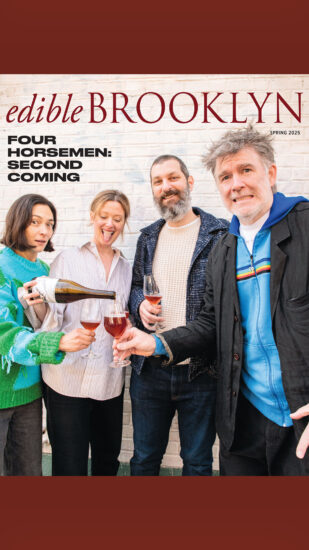
The Christmas confection at Don Paco Lopez bakery comes with a pamphlet. I’ve never before received a user’s manual with my baked goods, but Rosca de Reyes: Eating Instructions advises me to “Get together with co-workers/friends/family.” Eight more steps follow, including how to avoid choking, and a diagram of dunking bread into hot cocoa. The last reads simply, “Enjoy.”
The ring-shaped loaf, whose name means “bread of kings,” is central to the celebration of El Dia de Los Reyes (“Day of the Kings”) on Jan. 6. In Latin America, this date—not Dec. 25—is the pinnacle of Christmas celebrations. (For those of you who skipped Sunday school, the holiday, also known as Epiphany, commemorates the 12th day of Christmas, when the Three Kings arrived in Bethlehem bearing gifts for Baby Jesus. They’d taken a circuitous route to foil King Herod and his plot to kill the newborn king.) Rosca de reyes bakers tuck a tiny figurine of baby Jesus into the dough to symbolize the way the Son of God was hidden from Herod.
With the rise of Sunset Park’s Latino population, the yeasted sweet is everywhere come January, but the Lopez bakery offers some of the finest—and claims to have been the first. Co-owner Miguel Lopez’s grandfather, Angel Lopez, ran a bakery in the family’s hometown of Acatlán, Puebla, and Miguel’s father, Francisco, started working the ovens at age 6. In 1976, Francisco emigrated to New York, followed later by his wife and nine children. In 1991, three of those children, including Miguel, opened Don Paco Lopez Panaderia, one of the first Mexican-owned businesses on Fourth Avenue. “We didn’t think we’d make it through the first year,” recalls Miguel.
Last January they received 4,500 orders for rosca de reyes. Preparations for the holiday rush begin months in advance: Francisco travels to Acatlán each spring to gather wild cactus from the surrounding hills and to scour markets for unripe figs, both of which adorn the bread. He cuts the cactus into four-inch strips and dyes them ruby red and forest green, and cooks the figs with water and sugar until they’re crystallized.
By Christmas the bakery is in high gear. Miguel’s brother-in-law, Nacho Cabrera, deftly works each ball of brioche-like dough into an oval, twirls it around his wrists until it’s the size of a giant doughnut, and slips in a plastic Baby Jesus, pinching the dough shut so it won’t melt in the oven. Then he bedecks the ring with fig and cactus, plus cherries tinted emerald green and strips of orange peel candied in-house. Before baking, the bread is a Technicolor delight, the neon toppings bright against the pale dough; swept with egg yolk wash and baked for half an hour, it emerges from the oven a deeply burnished beauty.
In Mexico, children tuck their gift wish list in a pair of shoes the night before the holiday. In the morning, gifts appear from the Three Kings, and groups of families and friends gather to cut into the rosca and dunk it into hot chocolate, coffee or champurrado, a drink of ground cornmeal and chocolate. The eater whose slice contains the Baby Jesus is obligated to host a tamale party on February 2. Step five in the pamphlet reads, “Don’t try to deny that you got a figurine to avoid throwing the party! No one has ever done it without being caught.”



